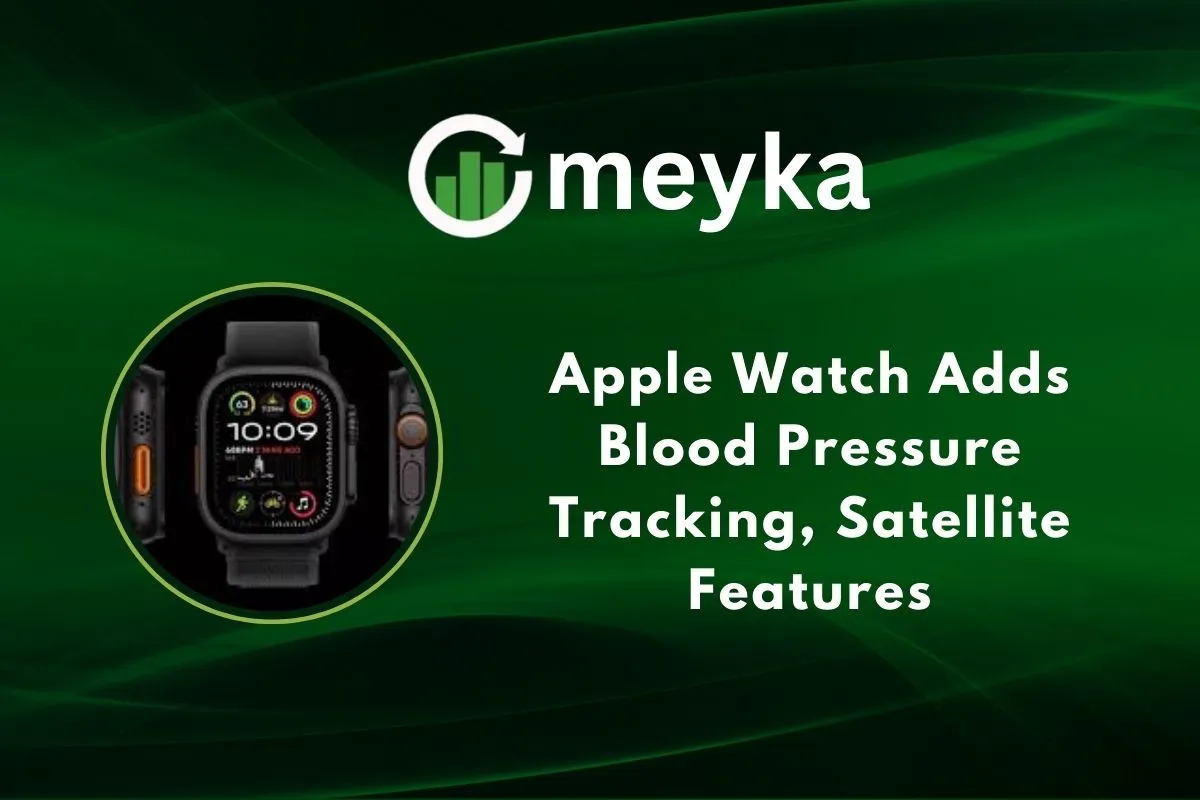Apple Watch Adds Blood Pressure Tracking, Satellite Features
Apple has pushed the smartwatch experience beyond its old limits. With its latest update, the Apple Watch now comes with blood pressure tracking and satellite connectivity. These aren’t just small upgrades; they mark a shift in how we see wearables. Instead of being just fitness companions, they are becoming essential tools for health and safety.
Many people live with high blood pressure without realizing it, which is why it’s known as a “silent killer” that can cause serious health problems without early signs. Having a tool on our wrist that can track it daily makes health monitoring simpler and more accessible. At the same time, satellite features mean we can stay connected even in places with no signal, whether we’re hiking, traveling, or facing an emergency.
This mix of health innovation and safety assurance shows where Apple is headed. The Apple Watch is no longer just about steps, calories, or workouts. It is about life-saving support and proactive care, something that matters to all of us.
The Evolution of Apple Watch
We’ve come a long way from the early Apple Watch models that counted steps and notifications. Over time, Apple added features like ECG, blood oxygen monitoring, and now sleep apnea detection. These changes reflect Apple’s clear path: turning the watch into a true health companion. The latest features build on that and bring new layers of safety and insight.
Blood Pressure Tracking: A Health Game-Changer
High blood pressure, or hypertension, affects about 1.3 billion adults worldwide and often shows no symptoms, earning it the nickname “silent killer”., The new Apple Watch models, Series 11 and Ultra 3, use a clever algorithm and the optical heart rate sensor to watch our blood vessels for 30 days, then alert us if something looks off.
We get notified early, and can follow up using a proper cuff or by seeing a doctor. It’s not a medical diagnosis, but it brings awareness, and early steps matter. Plus, Apple plans to bring these alerts to older watches like Series 9 and Ultra 2 via watchOS 26, once cleared by regulators. This upgrade gives us peace of mind, without forcing us to buy a new watch.
Satellite Connectivity: Safety Beyond Coverage
Imagine being on a mountain trail, cut off from phones and Wi-Fi. The Apple Watch Ultra 3 now uses satellite links, allowing us to reach emergency help, send our location, or stay in touch with family and friends.
We don’t need to worry about lost coverage. The Watch can even send an alert if it detects a serious fall or car crash, even when you’re unresponsive, using satellite SOS or Find My via satellite. All this comes free for two years with the Ultra 3. Apple has extended free satellite connectivity for iPhone 14 and iPhone 15 owners, giving them access to the service through November 2026.
Integration with Apple Ecosystem
Apple Watch works effortlessly with the iPhone, iPad, and Health app, creating a smooth and connected user experience. Blood pressure alerts and sleep data get synced and tucked into Apple Health. Satellite emergency messages are delivered directly within Apple’s connected ecosystem. This means our health and safety data stays private, secure, and easy to share with apps and doctors, with our permission, of course.
Plus, Apple’s expansion into services, like Workout Buddy, Smart Stack, and the new Liquid Glass design, means everything feels designed to fit together and feel personal on our wrist.
Competitive Edge and Market Impact
With these features, Apple pulls ahead of rivals like Samsung, Garmin, and Fitbit. Few smartwatches offer blood pressure alerts plus satellite SOS. It boosts Apple’s brand as a leader in both tech innovation and health tools.
We’ll likely see a rise in smartwatch adoption. Health-conscious shoppers, outdoor lovers, and safety-minded users have reason to upgrade. Analysts expect the wearable health market to keep growing fast.
Even users with slightly older watches benefit; Apple is bringing key features to Series 9 and beyond via watchOS 26. That inclusive move keeps us all in the loop.
Challenges and Limitations
Still, there are things to watch. The blood pressure alerts rely on an algorithm, not clinical tools, and aren’t a replacement for proper medical measurements. We’ll want to confirm findings with a proper cuff.
The Ultra 3’s satellite features could impact battery life, especially when active. Some buyers might hesitate because of the cost, as the Ultra 3 begins at $799, the Series 11 at $399, and the SE 3 at $249. Finally, Apple’s health features await regulatory approval, like FDA clearance, before they roll out everywhere.
Future Outlook
Where might Apple go next? We could soon get glucose monitoring, hydration tracking, or mental health tools. Satellite messaging might expand to more devices and tools. More health insights, like stress levels or posture alerts, might surface soon.
Apple makes it clear that the Watch is more than just a simple gadget. It’s becoming our on-hand health helper, safety partner, and smart coach.
Conclusion
Apple Watch has taken a bold leap. By adding blood pressure alerts and satellite messaging, the Watch blends health insights with safety wherever we go. It bridges the gap between smart accessory and proactive health tool, with updates for older models keeping things inclusive. If we’re tracking our health or heading off the beaten path, the Apple Watch is now more essential than ever. With these changes, Apple shows us the future of wearable tech, where caring meets innovation.
FAQS:
The newest Apple Watch cannot deliver exact blood pressure readings. Instead, it tracks changes and alerts us to possible hypertension risk, but real checks still need a cuff.
The Apple Watch Ultra 3 lacks 5G connectivity. It connects using Wi-Fi, Bluetooth, and LTE where available, plus it now offers satellite connectivity for emergencies.
The Apple Watch Ultra 3 does not directly measure blood pressure. It gives blood pressure alerts by spotting long-term patterns, helping users notice risks earlier than before.
Disclaimer:
This content is for informational purposes only and is not financial advice. Always conduct your research.






